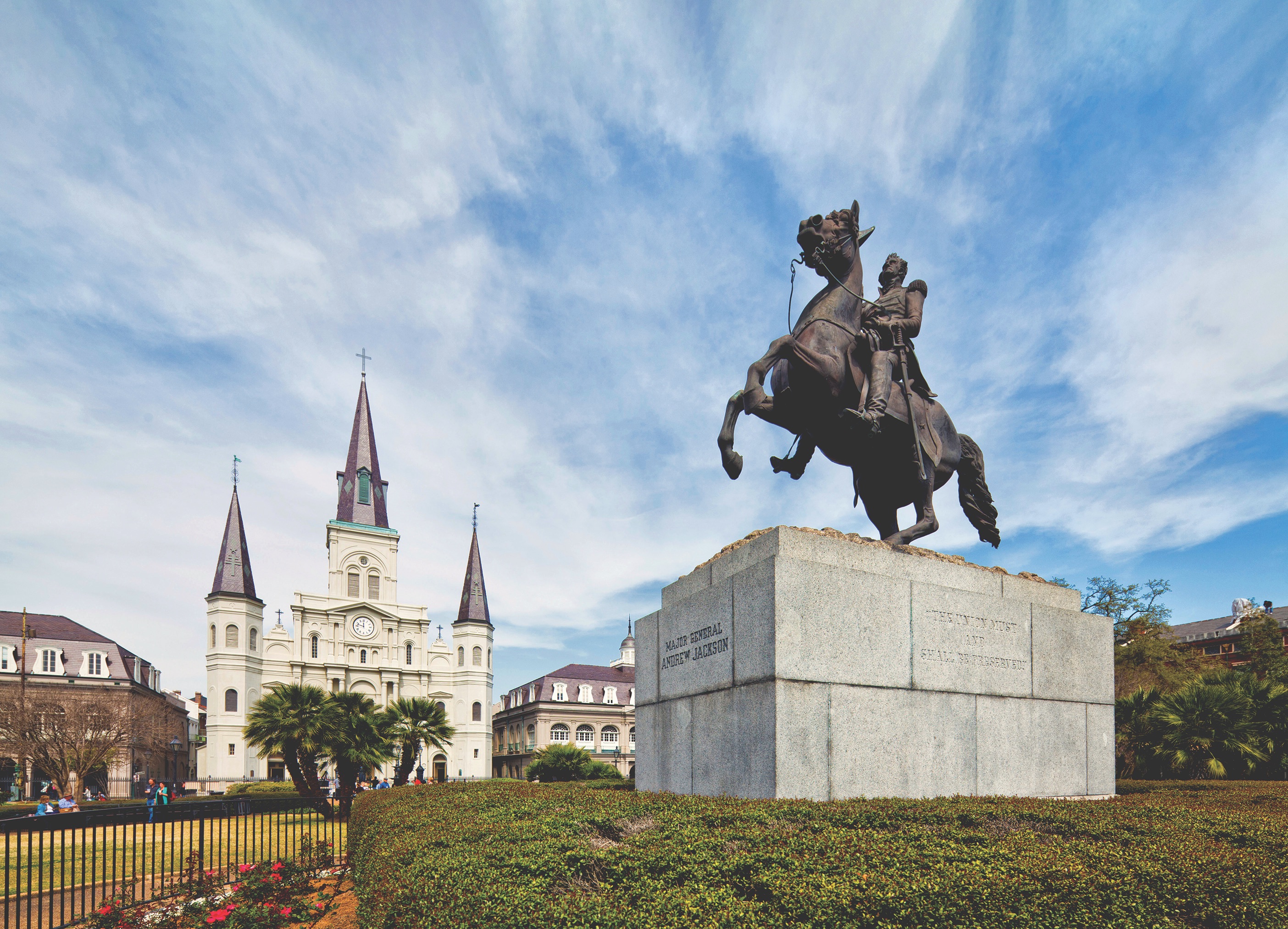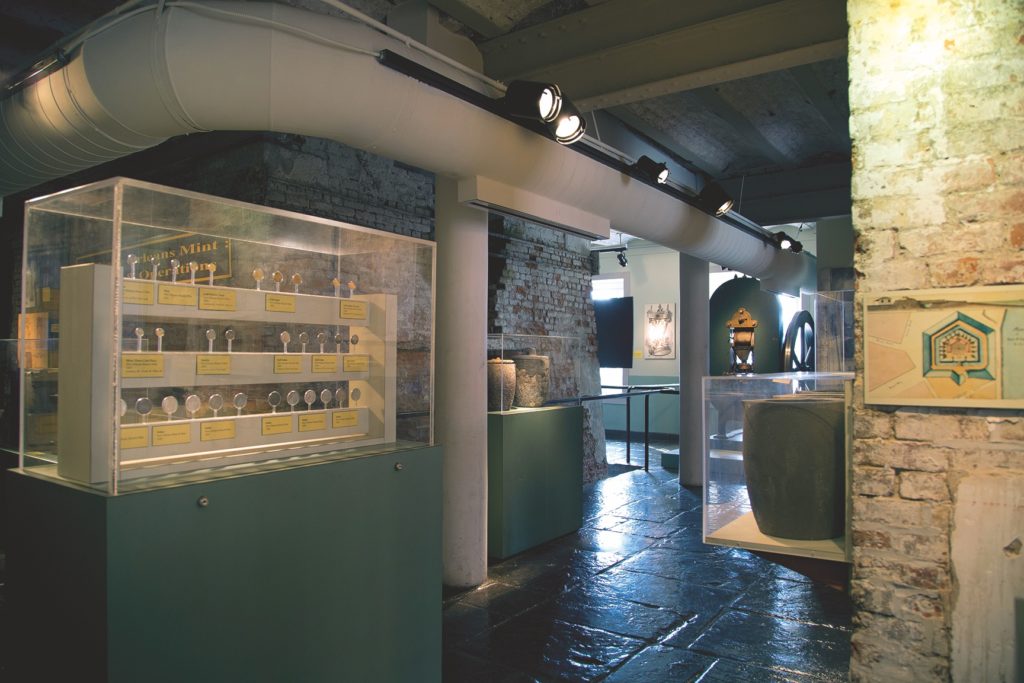New Orleans, the Confederacy’s largest and most commercially important city, fell to the Union in May 1862
With trees heavy with Spanish moss and swamp water brown as whiskey, the lowlands of New Orleans looked nothing like home to Private Francis Stick. He’d joined the 47th Pennsylvania Infantry back in Harrisburg, Pa., a world apart from this bawdy Mississippi River town, best known as the site of Andrew Jackson’s commanding 1815 victory over British forces. But it was in New Orleans, not Pennsylvania, where Stick would die of disease in June 1864, and where he remains buried at Chalmette National Cemetery, just one of several places that interpret the Big Easy’s role in the Civil War. Unlike other Southern cities that changed hands frequently throughout the war, New Orleans fell under Union control decisively in May 1862, following the Battles of Fort Jackson and St. Philip nearer the mouth of the Mississippi. This installed Maj. Gen. Benjamin Butler as the controversial military governor of New Orleans. Derisively known as “Beast” Butler, the general offended local citizens with his General Orders No. 28, which decreed that any woman showing contempt for Union soldiers would be treated like “a woman of the town plying her avocation”—in other words, a prostitute. (Despite this, contempt remained high.) Several homes, museums, and public buildings with Civil War significance can be found in or near the city’s walkable French Quarter, but other places, such as Chalmette Cemetery and the Whitney Plantation, are well worth going farther afield.
[hr]
Historic New Orleans
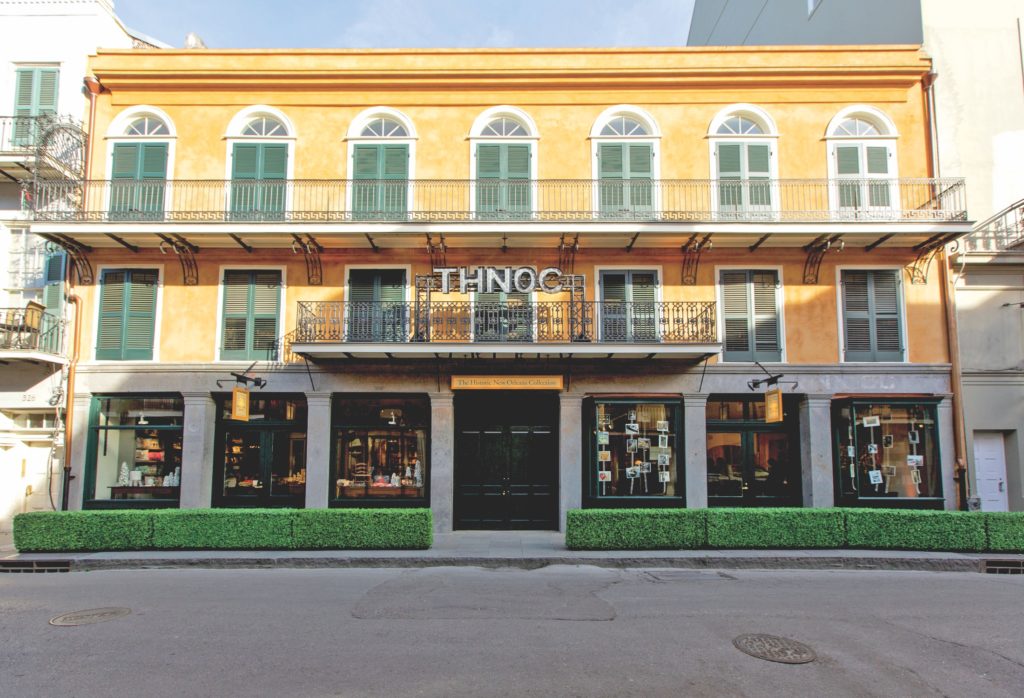 Steps from Jackson Square, travelers can visit The Historic New Orleans Collection, a conglomeration of 13 historic structures, extensive museum galleries, and a research center. An interactive map in the visitor center takes you through successive periods in the city’s history, and both permanent and rotating exhibits interpret the Civil War era. Of note among the collection’s Civil War artifacts is a carte de visite album showing a contraband-turned-drummer boy named Jackson, compiled by Colonel Cyrus Hamlin of the 80th U.S. Colored Troops. The album has been digitized so visitors can peruse Hamlin’s fascinating collection of portraits of leaders and common soldiers alike.
Steps from Jackson Square, travelers can visit The Historic New Orleans Collection, a conglomeration of 13 historic structures, extensive museum galleries, and a research center. An interactive map in the visitor center takes you through successive periods in the city’s history, and both permanent and rotating exhibits interpret the Civil War era. Of note among the collection’s Civil War artifacts is a carte de visite album showing a contraband-turned-drummer boy named Jackson, compiled by Colonel Cyrus Hamlin of the 80th U.S. Colored Troops. The album has been digitized so visitors can peruse Hamlin’s fascinating collection of portraits of leaders and common soldiers alike.
[hr]
Mint Condition
Located on the eastern edge of the French Quarter, the distinctive red New Orleans Mint building produced U.S. currency from 1838 through the 1861 outbreak of war. The mint then converted to producing Confederate coinage, particularly half dollars, until the city fell to Federal forces. In April 1862, outraged by the American flag flying atop the building, a New Orleanian named William Mumford (along with others) defiantly tore it down and ripped it to tatters. Determined to make an example of him, Butler charged Mumford with treason and ordered that he be executed in the yard of the Mint itself. Before a crowd of more than 10,000, Mumford was hanged on June 7, 1862, and the Beast’s controversial reputation was sealed. Today, the Mint is a decidedly more cheerful place—home to the New Orleans Jazz Museum, which hosts more than 300 concerts a year.
[hr]
No Beans, No Problem
Just south of Jackson Square is New Orleans’ famous open-air coffee stand, Café du Monde, which dates to 1862. Here, visitors can drink the chicory-blended coffee that became popular 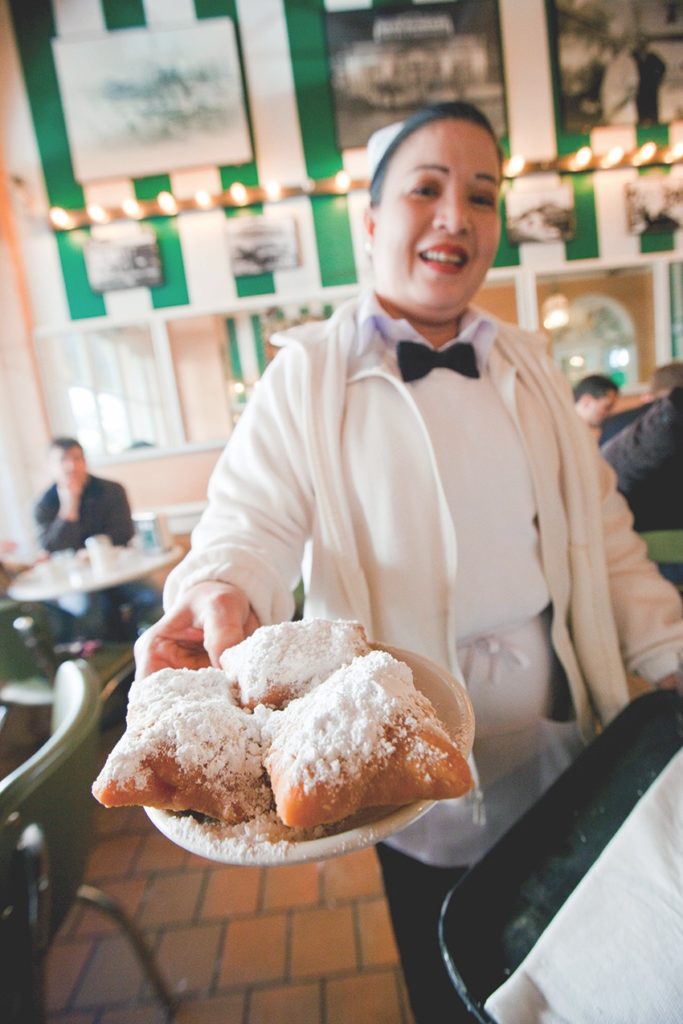 during the Civil War, when Union naval blockades stifled the city’s thriving coffee trade. Chicory root became a common coffee substitute throughout the South and has remained an indelible part of the city’s food culture. Sugar-topped beignets, a French pastry served in threes, are the classic chicory-coffee companion.
during the Civil War, when Union naval blockades stifled the city’s thriving coffee trade. Chicory root became a common coffee substitute throughout the South and has remained an indelible part of the city’s food culture. Sugar-topped beignets, a French pastry served in threes, are the classic chicory-coffee companion.
[hr]
Telling Slavery’s Story
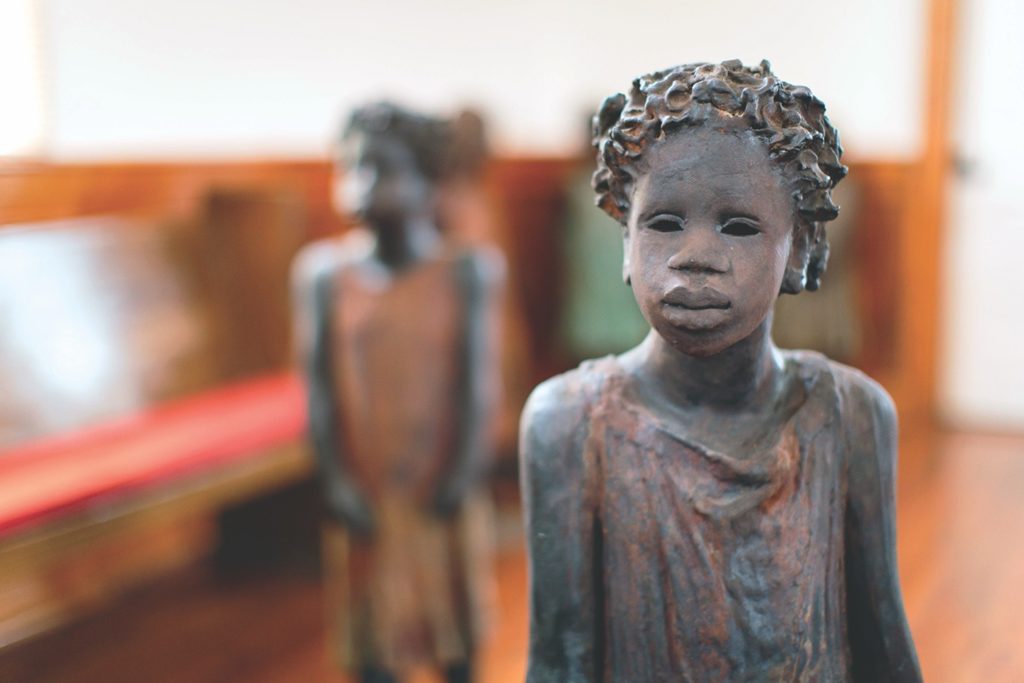 Located about an hour west of downtown, the Whitney is the only antebellum plantation in the United States devoted solely to telling the stories of enslaved people. During 90-minute guided tours, visitors hear how enslaved laborers fought for freedom however they could, through rebellion or escape, and witness wrenching memorials to the thousands of enslaved people, including children, who died on the property and the surrounding area before the Civil War. Most viscerally, they can touch a row of sugar cane plants, whose serrated leaves repeatedly and painfully sliced the arms of reapers, and ring haunting bells set up to honor their memory.
Located about an hour west of downtown, the Whitney is the only antebellum plantation in the United States devoted solely to telling the stories of enslaved people. During 90-minute guided tours, visitors hear how enslaved laborers fought for freedom however they could, through rebellion or escape, and witness wrenching memorials to the thousands of enslaved people, including children, who died on the property and the surrounding area before the Civil War. Most viscerally, they can touch a row of sugar cane plants, whose serrated leaves repeatedly and painfully sliced the arms of reapers, and ring haunting bells set up to honor their memory.
[hr]
Museum Pieces
New Orleans’ vibrant museum district includes both new and old: the must-see National World War II Museum, the Contemporary Arts Center, and the Confederate Memorial Hall Museum, which dates to 1891 and is the oldest museum in Louisiana. In addition to the expected array of Southern flags, uniforms, and weapons, the museum’s collection of personal items is interesting and poignant, including a ring of uniform buttons that a grieving mother saved before burying her son, a field chess set found at Shiloh, and a brass buckle featuring the state seal—a Louisiana pelican.
[hr]
U.S. Custom House
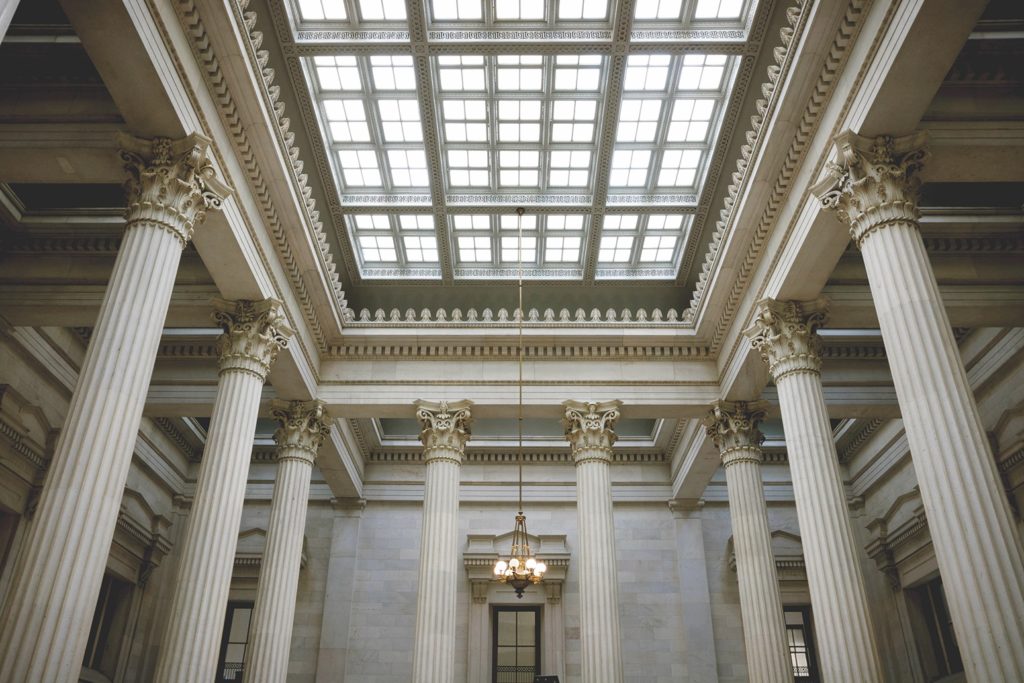 Begun in 1848, the U.S. Custom House on Canal Street was still under construction when Louisiana joined the Confederacy in February 1861. Workers built a temporary roof for the structure so it could be used in wartime, first as a manufacturer of Confederate gun carriages and later as a Federal headquarters and prison. In 1874, the building factored into the Battle of Liberty Place, a deadly paramilitary uprising led by former Confederate veterans in which General James Longstreet, who tried to quell the fighting, was pulled from his horse and injured. The Custom House now houses the Audubon Butterfly Garden and Insectarium, fittingly located in a city that sees four-inch grasshoppers known as Devil’s horses.
Begun in 1848, the U.S. Custom House on Canal Street was still under construction when Louisiana joined the Confederacy in February 1861. Workers built a temporary roof for the structure so it could be used in wartime, first as a manufacturer of Confederate gun carriages and later as a Federal headquarters and prison. In 1874, the building factored into the Battle of Liberty Place, a deadly paramilitary uprising led by former Confederate veterans in which General James Longstreet, who tried to quell the fighting, was pulled from his horse and injured. The Custom House now houses the Audubon Butterfly Garden and Insectarium, fittingly located in a city that sees four-inch grasshoppers known as Devil’s horses.
[hr]
A Quiet Place
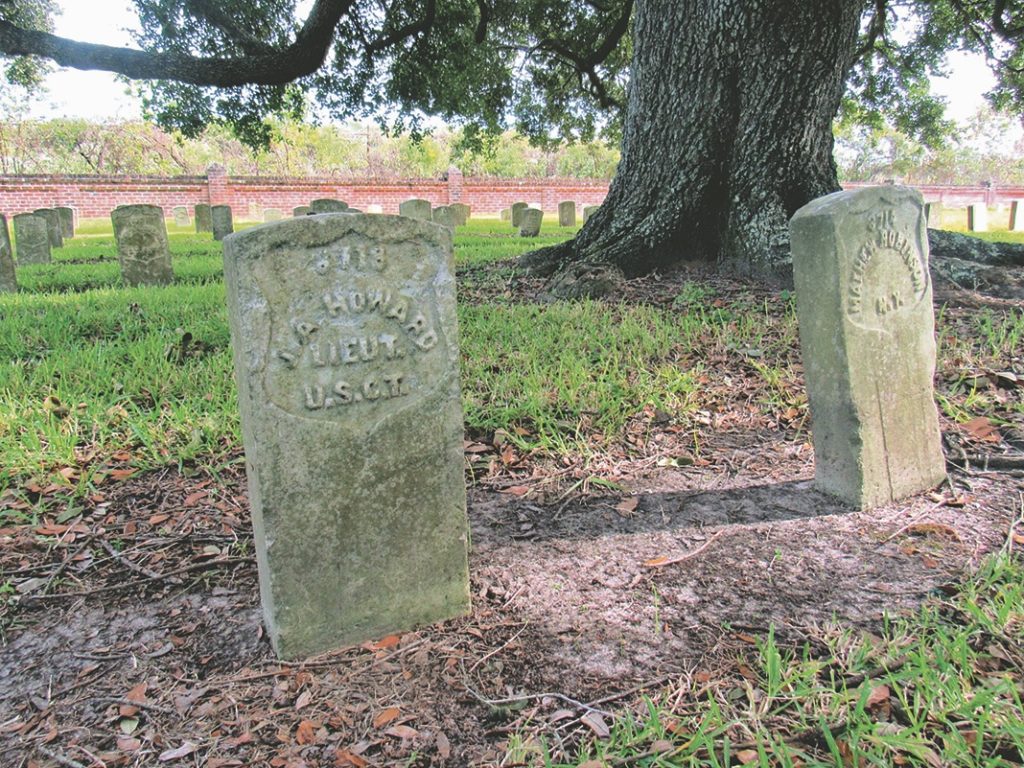 Under the protective limbs of sprawling oak trees, thousands of Union dead lie buried at Chalmette National Cemetery, established in 1864 and located about six miles downriver from the French Quarter. Soldiers from both sides had camped on the lowlying property before the Union occupation, when it became a contraband camp and then a national cemetery (the final resting place of veterans from the Civil War through Vietnam, as well as four reinterments from the War of 1812). Notable burials include members of the U.S. Colored Troops as well as “Lyons” Wakeman, the pseudonym of Sarah Rosetta Wakeman, a woman who served in the 153rd New York Infantry before she succumbed to dysentery in 1864. Chalmette suffered severe damage from Hurricane Katrina, which toppled headstones and unearthed bones, but a preservation effort has restored its serene historic appearance.
Under the protective limbs of sprawling oak trees, thousands of Union dead lie buried at Chalmette National Cemetery, established in 1864 and located about six miles downriver from the French Quarter. Soldiers from both sides had camped on the lowlying property before the Union occupation, when it became a contraband camp and then a national cemetery (the final resting place of veterans from the Civil War through Vietnam, as well as four reinterments from the War of 1812). Notable burials include members of the U.S. Colored Troops as well as “Lyons” Wakeman, the pseudonym of Sarah Rosetta Wakeman, a woman who served in the 153rd New York Infantry before she succumbed to dysentery in 1864. Chalmette suffered severe damage from Hurricane Katrina, which toppled headstones and unearthed bones, but a preservation effort has restored its serene historic appearance.
[hr]
Feast and Famine
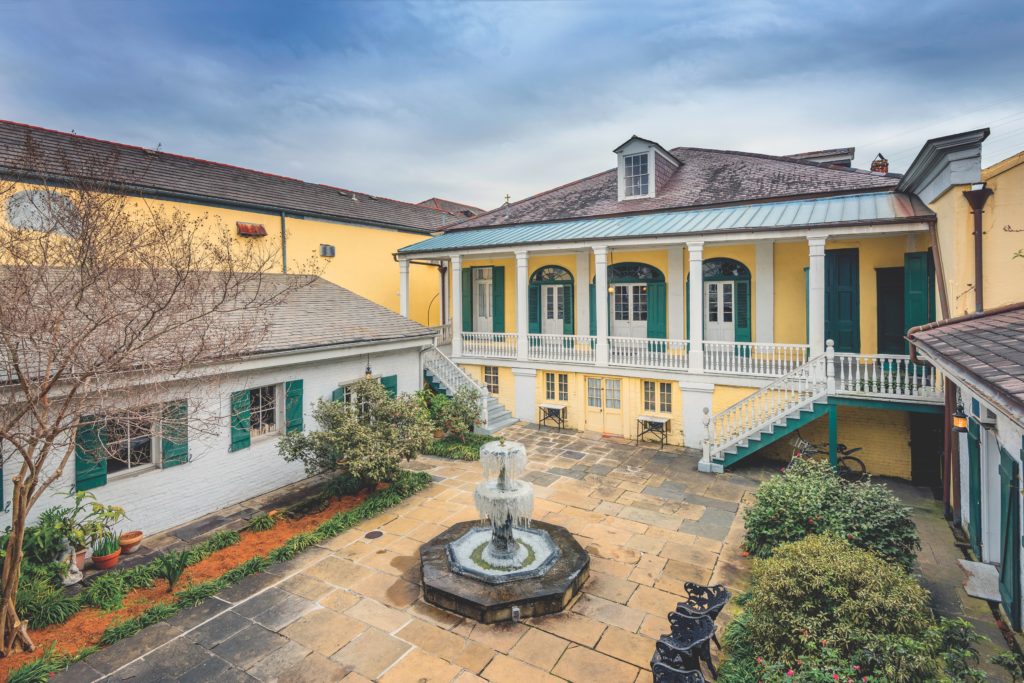 Two historic houses in the French Quarter were important to prominent Civil War figures, but they are in drastically different conditions. The Beauregard-Keyes House, an 1826 Greek Revival building, is now a lavish museum that illuminates the lives of its famous residents—Confederate General P.G.T. Beauregard, a New Orleans native who lived there immediately following the Civil War, and 20th-century author Frances Parkinson Keyes. Only a few blocks away, at 327 Bourbon Street, sits the former home of Confederate Secretary of State Judah Benjamin. In contrast to the many tourist-oriented antebellum buildings in New Orleans, the 1835 Italianate townhouse was most recently the site of a strip club, but is now boarded up and closed to curious visitors.
Two historic houses in the French Quarter were important to prominent Civil War figures, but they are in drastically different conditions. The Beauregard-Keyes House, an 1826 Greek Revival building, is now a lavish museum that illuminates the lives of its famous residents—Confederate General P.G.T. Beauregard, a New Orleans native who lived there immediately following the Civil War, and 20th-century author Frances Parkinson Keyes. Only a few blocks away, at 327 Bourbon Street, sits the former home of Confederate Secretary of State Judah Benjamin. In contrast to the many tourist-oriented antebellum buildings in New Orleans, the 1835 Italianate townhouse was most recently the site of a strip club, but is now boarded up and closed to curious visitors.
[hr]
Local Color
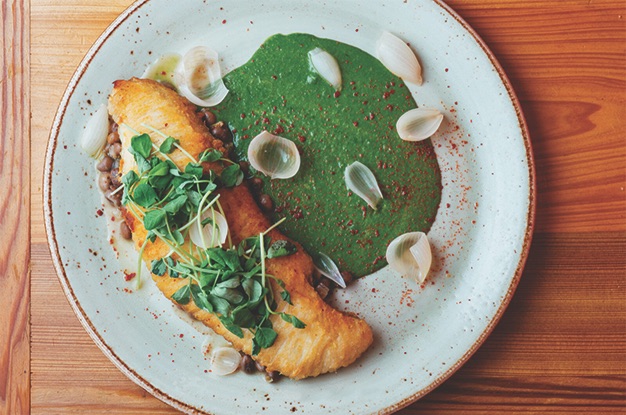 After you’ve sampled New Orleans’ requisite beignets and po-boy sandwiches, for a special meal we recommend Cavan, which offers refined Southern cuisine in a cozy 1883 mansion dripping with chandeliers and historic photos. Entrees include a tangy skate wing with pickled pearl onions, striped bass with a creamy white bean puree, and a double burger with house-made bacon. The creative cocktail and boilermaker menu will chase away troubles, too.
After you’ve sampled New Orleans’ requisite beignets and po-boy sandwiches, for a special meal we recommend Cavan, which offers refined Southern cuisine in a cozy 1883 mansion dripping with chandeliers and historic photos. Entrees include a tangy skate wing with pickled pearl onions, striped bass with a creamy white bean puree, and a double burger with house-made bacon. The creative cocktail and boilermaker menu will chase away troubles, too.
This story appeared in the April 2020 issue of Civil War Times.

